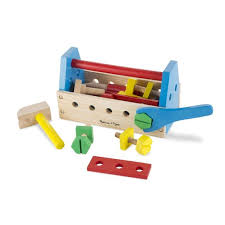 I love to hear from candidates after they start with our client companies. We work especially hard to make a great match and post-start feedback is a valuable measure for us. We recently placed a candidate with a large company in a role where they would have peers and employees all over the globe. It was wonderful to hear the lengths her new employer went to ensure that she was introduced to varied team members and walked through the internal processes and tools that she needed to hit the ground running. We’ve heard a different story from candidates who want to network with us because they are disenchanted with the company they recently joined, leading them to continue their search.
I love to hear from candidates after they start with our client companies. We work especially hard to make a great match and post-start feedback is a valuable measure for us. We recently placed a candidate with a large company in a role where they would have peers and employees all over the globe. It was wonderful to hear the lengths her new employer went to ensure that she was introduced to varied team members and walked through the internal processes and tools that she needed to hit the ground running. We’ve heard a different story from candidates who want to network with us because they are disenchanted with the company they recently joined, leading them to continue their search.
We’ve all been there. It’s our first week and we don’t even yet know where the rest room is located! Learning new names, places and the lay of the land can be daunting. Organizations who are great at helping new members feel immediately welcome and part of the team do these key things:
- Focus on On-boarding – It’s not all about the paperwork!
- Get to know them as a Person
- Provide Single Points-of-Contact
- Have Relevant Training
- Help to Quickly Engaging in their Work
- And if they’re Relocating, they do more
Yes, there is paperwork requiring completion to allow access to systems, provide tools and, of course, get paid. But a key focus while on-boarding should also be to make your new hires feel connected. Some companies put together a photo collage of teammates, delineating what each team member does, how they can help you, and perhaps most importantly, what interests each individual in their work and outside of the job.
Assessments are sometimes used as part of the interview process. I’m a proponent of using them for this purpose and also the added benefit of using the data to target customization of the on-boarding process based on the individual’s style of processing information and communication.
Assigning a mentor for the first 30 days is common. Whether you assign one mentor or a single point-of-contact for different areas of the job, having a defined go-to person is a benefit.
You hired this individual for a specific skill set and experience. However, there are things that the rest of you know about the company’s objectives, drivers and approach that the new hire needs to understand. Having a well thought out training program pays dividends. I was extremely impressed by one of our US-based client’s objectives to have all new hires for their sales expansion on-board before their sales strategy kick-off meeting in Europe. While there was expense to send a multitude of new sales executives to this week-long international meeting and training sessions, the pay off in allowing them to hit the ground running was huge. It’s interesting to note that every one of those individuals remains with the company and reports a high level of satisfaction!
A key desire when someone has started in a new role is to “get started!” Thinking through the tasks you will assign in the first four weeks, 30 days and 90 days and communicating these helps to give the new hire an understanding of what will be expected of them from the get-go. It will also allow them to prepare and focus their attention and feel like they are contributing more quickly. Ideally, you’ll be developing this plan jointly. It’s important to seek your employee’s opinions and this is a way to show that you value their opinion from the beginning.
Finally, if you’ve had to look outside of your area to find the right person, helping them and their family to have a smooth transition to their new home location is a way to differentiate your company culture as welcoming, as well as helping to remove some of the distraction that goes along with a relocation. Some companies put together a full book or packet of information from real estate data and Realtors to schools to favorite restaurants and service organizations. These are always appreciated!
The risk of not implementing a strong on-boarding process is that the person you invested so much in finding and hiring, turns your opportunity into their bridge job to a position with a new company whose culture they view as more welcoming!
You’ll never regret investing to hire right or in your employees’ start with the company. We’re interested in hearing what you’ve experienced as a new hire. And, we hope you’ll also share your creative ideas to help a new employee to feel welcome, quickly integrated into the team, and set up for success in their role.



 for you and what are things that should be present to meet your unique needs.
for you and what are things that should be present to meet your unique needs. According to the
According to the  Have you ever experienced…
Have you ever experienced… A question we’re often asked is, “When should we start recruiting for an upcoming position?” The answer remains that typically sooner is better. I would say this holds even more so during the pandemic, than you think. It’s never a good idea to feel rushed to hire, especially if it causes you to eliminate or short-change important steps that ensure you’re choosing the best-fit candidate who will thrive in your organization.
A question we’re often asked is, “When should we start recruiting for an upcoming position?” The answer remains that typically sooner is better. I would say this holds even more so during the pandemic, than you think. It’s never a good idea to feel rushed to hire, especially if it causes you to eliminate or short-change important steps that ensure you’re choosing the best-fit candidate who will thrive in your organization. report receiving more applicants from larger corporations than in the past. You may be as well. If you’re considering bringing a candidate who has primarily worked for large corporations into your small business, here are four things to consider:
report receiving more applicants from larger corporations than in the past. You may be as well. If you’re considering bringing a candidate who has primarily worked for large corporations into your small business, here are four things to consider: One of the most important assets of any organization is its employees. Employees can determine success or failure, growth or stagnation. Finding and hiring the right talent can be a challenge within itself. JESSI Search has the process refined and a component is AI (Artificial Intelligence). AI provides us with an entrée into more than 250 online data sites, providing access to 350 million profiles. Even with the power of AI, it is just the beginning. Here are some of the questions you might be asking about recruiting in today’s market:
One of the most important assets of any organization is its employees. Employees can determine success or failure, growth or stagnation. Finding and hiring the right talent can be a challenge within itself. JESSI Search has the process refined and a component is AI (Artificial Intelligence). AI provides us with an entrée into more than 250 online data sites, providing access to 350 million profiles. Even with the power of AI, it is just the beginning. Here are some of the questions you might be asking about recruiting in today’s market: may not be a better time to invest in your sales team than now. In a highlighted article in Sales Pro Central on July 31, 2020, Christopher Croner was quoted as saying, this is “The greatest opportunity in 70 years to hire high-performance salespeople.” Whether you’re in a position to hire talent that’s currently available; or, you want to motivate and retain your existing team, understanding what makes your value proposition unique and the competencies needed to sell to your target customers is key.
may not be a better time to invest in your sales team than now. In a highlighted article in Sales Pro Central on July 31, 2020, Christopher Croner was quoted as saying, this is “The greatest opportunity in 70 years to hire high-performance salespeople.” Whether you’re in a position to hire talent that’s currently available; or, you want to motivate and retain your existing team, understanding what makes your value proposition unique and the competencies needed to sell to your target customers is key. onboarding effectively, motivating and leading your team to stay productive in today’s remote hiring and work environment takes effort and expertise. Who better to assist you with your remote hiring needs than JESSI Search, a leading recruiting firm that has thrived in a remote work environment for more than a decade?
onboarding effectively, motivating and leading your team to stay productive in today’s remote hiring and work environment takes effort and expertise. Who better to assist you with your remote hiring needs than JESSI Search, a leading recruiting firm that has thrived in a remote work environment for more than a decade? Organizations are learning to be resilient, resourceful and how to cope with a new reality. Organizational and individual competencies, strengths and weaknesses, are more visible than in normal times.
Organizations are learning to be resilient, resourceful and how to cope with a new reality. Organizational and individual competencies, strengths and weaknesses, are more visible than in normal times. The need to build teams in 2020 with roles that can generate growth remains strong. When consulting with hiring managers and candidates who are considering a new role, culture fit is one of the topics we always want to assess. Skills can be taught. A mismatch in culture often derails what is initially perceived to be a great hire.
The need to build teams in 2020 with roles that can generate growth remains strong. When consulting with hiring managers and candidates who are considering a new role, culture fit is one of the topics we always want to assess. Skills can be taught. A mismatch in culture often derails what is initially perceived to be a great hire. Just as August is the top buying month in Real Estate, January is known as the top hiring month. Each New Year prompts new goals and leaders identify gaps in their talent pool that need to be filled to reach those goals.
Just as August is the top buying month in Real Estate, January is known as the top hiring month. Each New Year prompts new goals and leaders identify gaps in their talent pool that need to be filled to reach those goals. Submitting your information to a recruiting agency enters you into the black hole where your application disappears forever. It’s frustrating to apply for a position that you view yourself as ideal for, only to fall into this black hole. It may cause you to quit using this avenue in your job search, sticking to communicating with your network to find your next exciting career opportunity.
Submitting your information to a recruiting agency enters you into the black hole where your application disappears forever. It’s frustrating to apply for a position that you view yourself as ideal for, only to fall into this black hole. It may cause you to quit using this avenue in your job search, sticking to communicating with your network to find your next exciting career opportunity. If you are hiring, the news right now might seem less than encouraging! Earlier this month, The Wall Street Journal reported that U.S. Job Openings Outnumber Unemployed by Widest Gap Ever:
If you are hiring, the news right now might seem less than encouraging! Earlier this month, The Wall Street Journal reported that U.S. Job Openings Outnumber Unemployed by Widest Gap Ever:  Recruiting is changing to meet market conditions. New ways of accessing viable talent are popping up because in today’s market conditions it’s mandatory to engage candidates quickly. A recent blog post from Talentify spoke of the “Magic Window” and the power of the first 72 hours. This refers to the window of time you should respond to candidates of interest if you want to engage them in your opportunity.
Recruiting is changing to meet market conditions. New ways of accessing viable talent are popping up because in today’s market conditions it’s mandatory to engage candidates quickly. A recent blog post from Talentify spoke of the “Magic Window” and the power of the first 72 hours. This refers to the window of time you should respond to candidates of interest if you want to engage them in your opportunity. Search, we hear that a lot. We’ve earned a reputation in our field as a recruiting partner who can be trusted to know the talent market, finding candidates with the right set of competencies for the roles our clients trust us to fill, and who are open to making a change now and will stick with our client companies for years to come.
Search, we hear that a lot. We’ve earned a reputation in our field as a recruiting partner who can be trusted to know the talent market, finding candidates with the right set of competencies for the roles our clients trust us to fill, and who are open to making a change now and will stick with our client companies for years to come. productivity and profits. If you are experiencing employees who seem unmotivated and not as fresh or on top of their game as previous times, they may be moonlighting well into the night. This can be especially damaging if it’s impacting your sales team because they’re not continuously working to fill their pipelines and find potential deals.
productivity and profits. If you are experiencing employees who seem unmotivated and not as fresh or on top of their game as previous times, they may be moonlighting well into the night. This can be especially damaging if it’s impacting your sales team because they’re not continuously working to fill their pipelines and find potential deals. are around us. For me, that means sharp pencils and the start of the new school year. It also means looking forward to the first football game of the season. All of which combined with cooler days and colorful leaves make Fall my favorite season. After many years in the
are around us. For me, that means sharp pencils and the start of the new school year. It also means looking forward to the first football game of the season. All of which combined with cooler days and colorful leaves make Fall my favorite season. After many years in the better results by clarifying the attributes of the candidates that are ideal for both the position and your company culture. Just as candidates are not all the same, neither are recruiting firms. Ease of working with a recruiting firm differs widely as does results.
better results by clarifying the attributes of the candidates that are ideal for both the position and your company culture. Just as candidates are not all the same, neither are recruiting firms. Ease of working with a recruiting firm differs widely as does results. Superwoman, she experiences a spell compelling her to believe she has super powers. What could you accomplish with the belief that you have super powers?
Superwoman, she experiences a spell compelling her to believe she has super powers. What could you accomplish with the belief that you have super powers?
 grads and even parents are asking questions about their job search. My own daughter has called me numerous times and I’m proud to say that she’s accepted a great position, starting a couple of weeks after her graduation. For many graduates, this is the first time they are in a serious job search.
grads and even parents are asking questions about their job search. My own daughter has called me numerous times and I’m proud to say that she’s accepted a great position, starting a couple of weeks after her graduation. For many graduates, this is the first time they are in a serious job search. rom hiring managers while managing their hiring process. They believe they have diligently worked the steps only to realize a few months after the candidate starts that they are not such a great fit after all.
rom hiring managers while managing their hiring process. They believe they have diligently worked the steps only to realize a few months after the candidate starts that they are not such a great fit after all. skill set and demonstrated results to match the position, rather than being too focused on years of aligning industry experience, is smart. You may even consider using an assessment tool to benchmark the skills and competencies of the most successful individuals who are doing the job well now or who have done the job well in the past. For example, to identify what sets your top sales reps apart from less successful reps on the team.
skill set and demonstrated results to match the position, rather than being too focused on years of aligning industry experience, is smart. You may even consider using an assessment tool to benchmark the skills and competencies of the most successful individuals who are doing the job well now or who have done the job well in the past. For example, to identify what sets your top sales reps apart from less successful reps on the team. someone else’s court to call “when they’re ready,” you may not be the one who is there when they are ready. Part of building and keeping strong relationships is staying connected.
someone else’s court to call “when they’re ready,” you may not be the one who is there when they are ready. Part of building and keeping strong relationships is staying connected. are focused on finishing the year strong. Some are just focused on finishing the year without being in the tank. Regardless of where you fall, you can look to your sales leadership and your sales team for the answer.
are focused on finishing the year strong. Some are just focused on finishing the year without being in the tank. Regardless of where you fall, you can look to your sales leadership and your sales team for the answer. little things get you ahead in life. You might say there are two kinds of people, those who pay attention to the little things and doing them well and those who believe you get ahead in life by cutting corners. I’m a believer that cutting corners catches up with you in the long run. And that the extra effort pays off when doing something completely and well.
little things get you ahead in life. You might say there are two kinds of people, those who pay attention to the little things and doing them well and those who believe you get ahead in life by cutting corners. I’m a believer that cutting corners catches up with you in the long run. And that the extra effort pays off when doing something completely and well. every organization and a trait every employee desires in their employer. It is too common for a hiring manager to make an enthusiastic hiring decision only to experience the candidate’s evil twin shortly afterwards. So who is accountable in these situations? Perhaps both but if you are the hiring manager, you have to wonder, “What did I miss?” Ask yourself, “Is it possible I let my emotions override evidence and reason?” Emotions appear uninvited and can easily influence actions and decisions. Strong emotions create urgency and invite impulsive decisions. Good feelings and likeability are important but must accompany facts that the candidate aligns with the role based on their relative experience and evidence of accomplishments.
every organization and a trait every employee desires in their employer. It is too common for a hiring manager to make an enthusiastic hiring decision only to experience the candidate’s evil twin shortly afterwards. So who is accountable in these situations? Perhaps both but if you are the hiring manager, you have to wonder, “What did I miss?” Ask yourself, “Is it possible I let my emotions override evidence and reason?” Emotions appear uninvited and can easily influence actions and decisions. Strong emotions create urgency and invite impulsive decisions. Good feelings and likeability are important but must accompany facts that the candidate aligns with the role based on their relative experience and evidence of accomplishments. help companies through growth and change. JESSI Search works with leaders at the best of times and during the most uncertain times in their business. This experience provides a look into different leadership styles. Some are truly admirable, gaining great results.
help companies through growth and change. JESSI Search works with leaders at the best of times and during the most uncertain times in their business. This experience provides a look into different leadership styles. Some are truly admirable, gaining great results.

 According to a recent Forbes article, the cost of on-boarding an employee is at roughly $240,000. And, according to the U.S. Department of Labor, the price of a bad hire is at least 30 percent of the employee’s first-year earnings. For a small company, a five-figure investment in the wrong person is a threat to the business. The True Cost of a Bad Hire – It’s More than You Think, (Forbes, September 2016)
According to a recent Forbes article, the cost of on-boarding an employee is at roughly $240,000. And, according to the U.S. Department of Labor, the price of a bad hire is at least 30 percent of the employee’s first-year earnings. For a small company, a five-figure investment in the wrong person is a threat to the business. The True Cost of a Bad Hire – It’s More than You Think, (Forbes, September 2016) I love to hear from candidates after they start with our client companies. We work especially hard to make a great match and post-start feedback is a valuable measure for us. We recently placed a candidate with a large company in a role where they would have peers and employees all over the globe. It was wonderful to hear the lengths her new employer went to ensure that she was introduced to varied team members and walked through the internal processes and tools that she needed to hit the ground running. We’ve heard a different story from candidates who want to network with us because they are disenchanted with the company they recently joined, leading them to continue their search.
I love to hear from candidates after they start with our client companies. We work especially hard to make a great match and post-start feedback is a valuable measure for us. We recently placed a candidate with a large company in a role where they would have peers and employees all over the globe. It was wonderful to hear the lengths her new employer went to ensure that she was introduced to varied team members and walked through the internal processes and tools that she needed to hit the ground running. We’ve heard a different story from candidates who want to network with us because they are disenchanted with the company they recently joined, leading them to continue their search. Anxious for that perfect job opportunity, you reach out to recruiters in your desired location and career discipline. Right approach? Maybe, depending on how you manage it. You wouldn’t approach a potential employer without preparation; don’t make that mistake when reaching out to recruiters whose expertise you are requesting and potential representation into their clients you are seeking. First, stop and think about these things:
Anxious for that perfect job opportunity, you reach out to recruiters in your desired location and career discipline. Right approach? Maybe, depending on how you manage it. You wouldn’t approach a potential employer without preparation; don’t make that mistake when reaching out to recruiters whose expertise you are requesting and potential representation into their clients you are seeking. First, stop and think about these things: Your position is approved; you’re ready to get the right person on your team ASAP. You post it and spread the word. The right applicants will follow and you’ll have a selection of interested candidates to choose from. Or is it that simple?
Your position is approved; you’re ready to get the right person on your team ASAP. You post it and spread the word. The right applicants will follow and you’ll have a selection of interested candidates to choose from. Or is it that simple?

